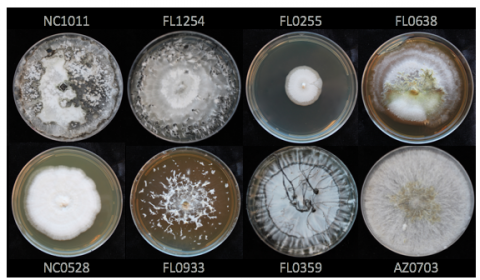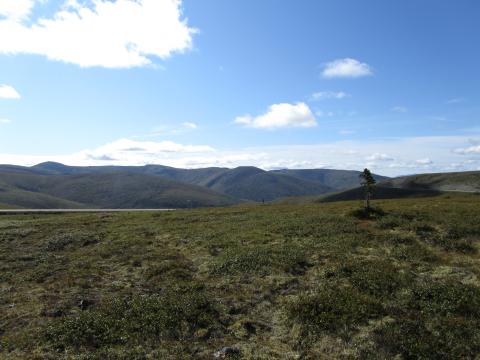Research

J.M. U'Ren
Morphological diversity of a subset of phylogenetically diverse xylariaceous endophytes from the US (representing both Hypoxyloideae and Xylarioideae subfamilies; U’Ren et al., 2016).
Comparative and population genomics of Xylariaceae: exploring the roles of endophytic fungi in lignocellulose degradation, nutrient cycling, and secondary metabolite production
Global, large-scale surveys of phylogenetically diverse plants and lichens (where endophytes live in association with the algal photobiont) have revealed a particularly high richness of endophytes in the fungal family Xylariaceae (Sordariomycetes, Pezizomycotina, Ascomycota) in boreal, temperate, subtropical, and tropical forests. In addition to their ecological roles in living leaves, many endophyte species also are found in decomposing leaves, wood, bark, fruits, or flowers, thus suggesting abilities to degrade lignocellulose. In collaboration with the DOE Joint Genome Institute, we are addressing the evolution of plant-endophyte symbioses, the diversity of fungal secondary metabolites, and lignocellulose degradation in the Xylariaceae. See our new publication in New Phytologist. https://doi.org/10.1111/nph.17873

J.M. U'Ren
Eagle Summit, Alaska
Diversity of boreal endophytes
As the earth's largest terrestrial biome boreal forests are important drivers of global carbon- and water cycles. In collaboration with Betsy Arnold (University of Arizona), François Lutzoni and Jolanta Miadlikowska (Duke University), Ignazio Carbone (NC State University), and Georgiana May (University of Minnesota ), this project seeks to characterize the diversity of culturable and unculturable fungi associated with lichens (endolichenic fungi) and plants (endophytic fungi) in boreal forests around the world. www.endobiodiversity.org See our manuscript in Nature Ecology and Evolution. https://doi.org/10.1038/s41559-019-0975-2

